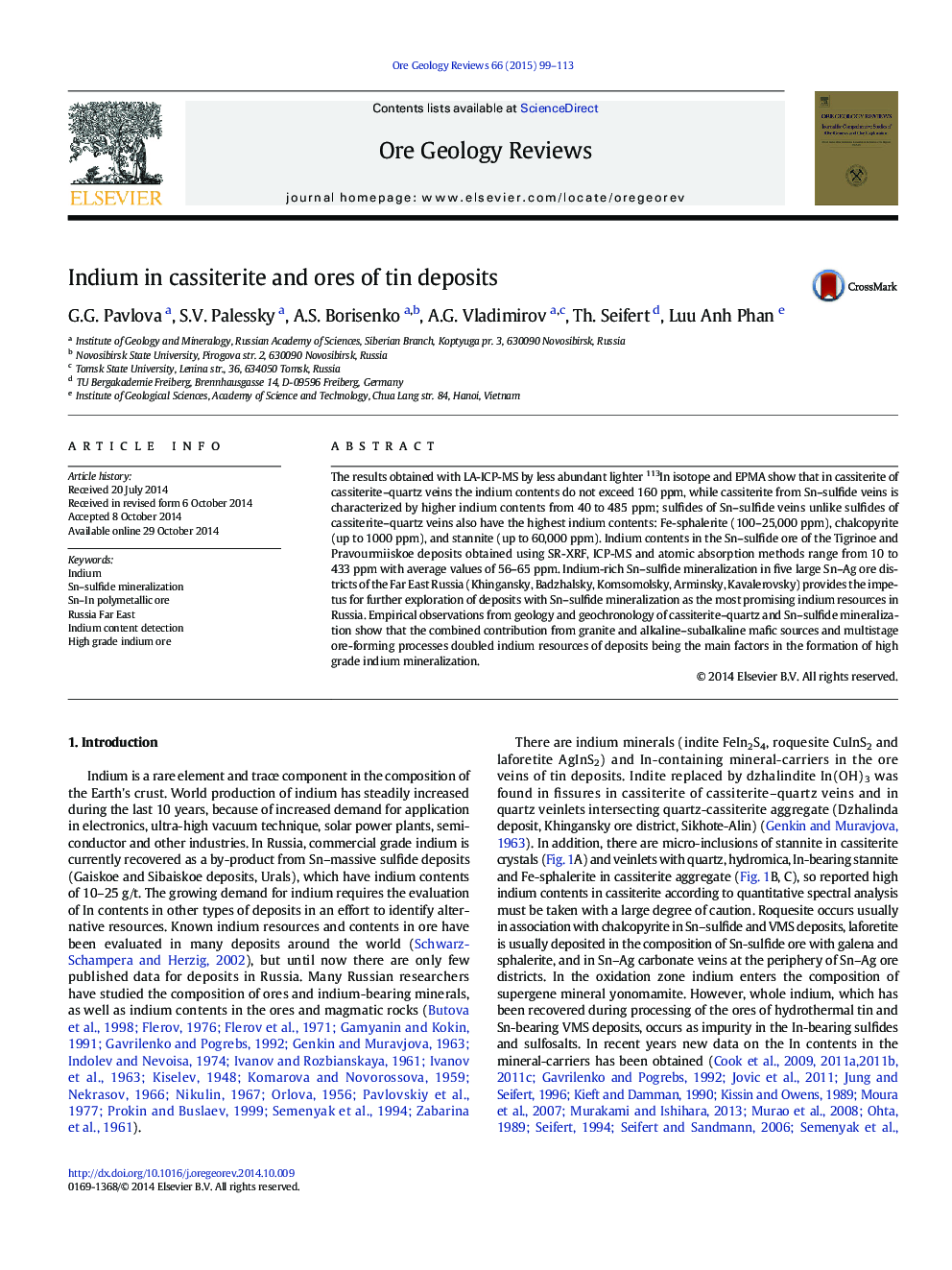| کد مقاله | کد نشریه | سال انتشار | مقاله انگلیسی | نسخه تمام متن |
|---|---|---|---|---|
| 4697172 | 1637238 | 2015 | 15 صفحه PDF | دانلود رایگان |
• We know how to detect indium in cassiterite.
• Most high grade indium ore is genetically related to hydrothermal overprints.
• Bimodal magmatism and multistage process as factors of high grade indium ore formation
• Where you can find indium minerals
The results obtained with LA-ICP-MS by less abundant lighter 113In isotope and EPMA show that in cassiterite of cassiterite–quartz veins the indium contents do not exceed 160 ppm, while cassiterite from Sn–sulfide veins is characterized by higher indium contents from 40 to 485 ppm; sulfides of Sn–sulfide veins unlike sulfides of cassiterite–quartz veins also have the highest indium contents: Fe-sphalerite (100–25,000 ppm), chalcopyrite (up to 1000 ppm), and stannite (up to 60,000 ppm). Indium contents in the Sn–sulfide ore of the Tigrinoe and Pravourmiiskoe deposits obtained using SR-XRF, ICP-MS and atomic absorption methods range from 10 to 433 ppm with average values of 56–65 ppm. Indium-rich Sn–sulfide mineralization in five large Sn–Ag ore districts of the Far East Russia (Khingansky, Badzhalsky, Komsomolsky, Arminsky, Kavalerovsky) provides the impetus for further exploration of deposits with Sn–sulfide mineralization as the most promising indium resources in Russia. Empirical observations from geology and geochronology of cassiterite–quartz and Sn–sulfide mineralization show that the combined contribution from granite and alkaline–subalkaline mafic sources and multistage ore-forming processes doubled indium resources of deposits being the main factors in the formation of high grade indium mineralization.
Journal: Ore Geology Reviews - Volume 66, April 2015, Pages 99–113
